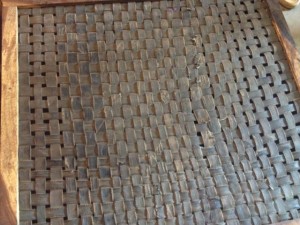Today is my last day in Tanzania for this trip. I know I will be back; I plan to be back for a short visit in November. For my last day, we took children to Comprehensive Community Based Rehabilitation in Tanzania (CCBRT) in Moshi to see a Speech Language Pathologist and Audiologist. And again we determined that the children did not have those issues, but just needed some extra help with academics, which the project will provide in the coming months. And again as with the KCMC visit, there was an unexpected outcome where we got an appointment for one of the parents to see someone there to help her. We think that if that parent can be supported then it will help the child as well.
But for me, the most surprising unintended consequence of today was the mingling of parents and children for various types of specialists. CCBRT has a few key programs, namely working with people with clubfeet, polio, cerebral palsy, and other developmental disabilities. Today, the neurologist was also seeing patients and there were several children with varying degrees of cerebral palsy and some intellectual disabilities waiting in the same area and using the stair trainer, gait trainers, walkers, and stretching on a mat outside. I noticed the teacher with us and the parents looking around and intently watching the children and parents (mostly mothers). I walked over and asked how they were and was asked if I had ever see children like these. I told them that I used to teach children like these and with more intense medical needs in my classroom. They were surprised.
As a real life reminder that children in Tanzania are sometimes still hidden or not part of community when they have intense physical or cognitive disabilities, these adults were sure they had never see children like this in their community. To further this statement, I was told by one teacher recently that there were no children in the school with disabilities, but when probing found that her definition of a children with a disability meant a child with a visible physical disability or a cognitive disability that was significant and obvious. Education of the community is still needed and it is so important to help our teachers and partners see the capability and value of people with disabilities in their communities.
On my last day of school yesterday, we held a meeting with the key people in the school and community we are working with to report the progress so far and discuss the road ahead, namely the various appointments we are arranging for children and families and additional instruction the Sarah and Veronica will be delivering starting next week to the students were have identified. The meeting was very successful and they were all very pleased. It was nice to see the community support from the local leaders and the school leaders. I gave them all presents from Boston and/or UMass Boston as a token of my appreciation for their cooperation and hospitality during my stay.
The teacher in our classroom had not realized that it was the last day I would be in the classroom. She insisted we hang around after the meeting of a while until her granddaughter could bring a present for me and present it to me in the traditional ceremonial way. It is a lovely traditional kitenge (the cloth they use for making their clothes, mostly women).


















































